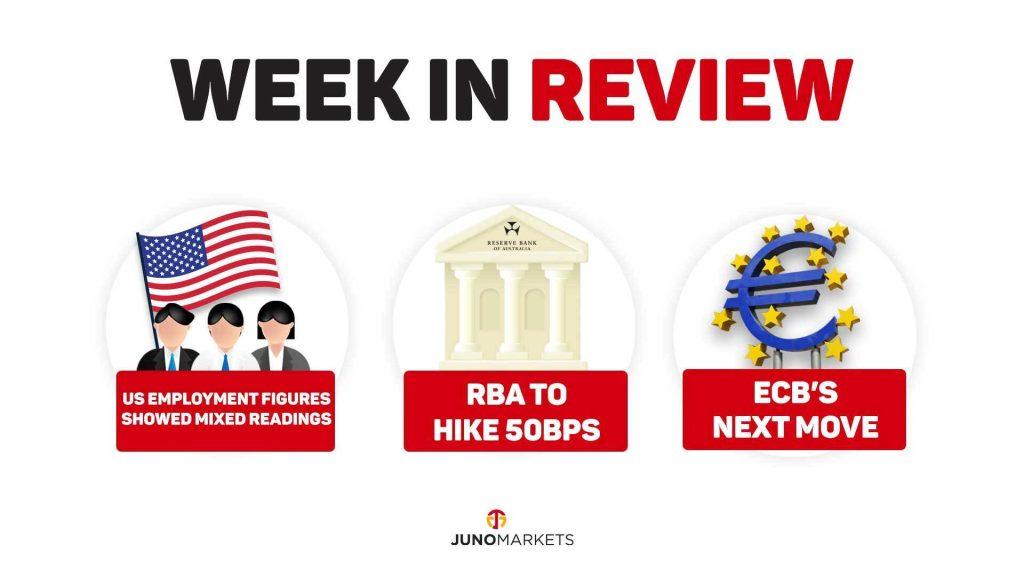US employment figures showed mixed readings
According to data released last Friday by the US Bureau of Labor Statistics, nonfarm payrolls increased in the US by 315,000 in August. This reading exceeded the market consensus of 300,000 by a small margin and follows July’s gain of 526,000 which was updated from 528,000. Unemployment rate increased from 3.5% to 3.7% while Average Hourly Earnings remains the same at 5.2%.
The mixed readings of US employment data has caused the US dollar to retreat while this has boosted stocks and gold. Markets are still pricing in a 75% possibility of a 75bps rate hike this month. The bad news for bulls is that this rise appears unlikely to last as the overall job market is still healthy and will not affect Fed’s decisions to combat inflation.
RBA to hike 50bps
Reserve Bank of Australia (RBA) is expected to deliver another 50bps on Tuesday to combat rising inflation. The central bank hiked rates by a total of 175 bps from May to 1.85%. After Q2 CPI increased to 6.1% in statistics released last week, there is still plenty of room for the RBA to raise interest rates in the months ahead. Additionally, the most recent Melbourne Institute inflation numbers for July increased to a new high of 5.4% from 4.7% in June.
RBA indicated a similar attitude to other central banks by stating it will work on a month-by-month basis, inflation predictions are for a peak of 7.75%, with subsequent rate hikes will be data dependent. On the other hand, the Australian housing market is beginning to show signs of instability due to falling home loan prices and a 17.2% drop in building approvals in July, continues to pose the greatest threat to the RBA.
ECB’s next move
Markets are pricing in a 50bps this week as European Central Bank (ECB) is set to announce its rate decision on Thursday bringing the headline rate back into positive level for the first time since 2014. The central bank also declared that moving ahead, all rate decisions would be made at individual meetings, thereby ending forward guidance.
Although rates will still be 0.5%, the issue for the Eurozone is not that the economy cannot handle higher interest rate but rather it is what this higher interest rate represents that has the greatest market impact. This shows that ECB is following Fed’s footsteps to curb inflation.




